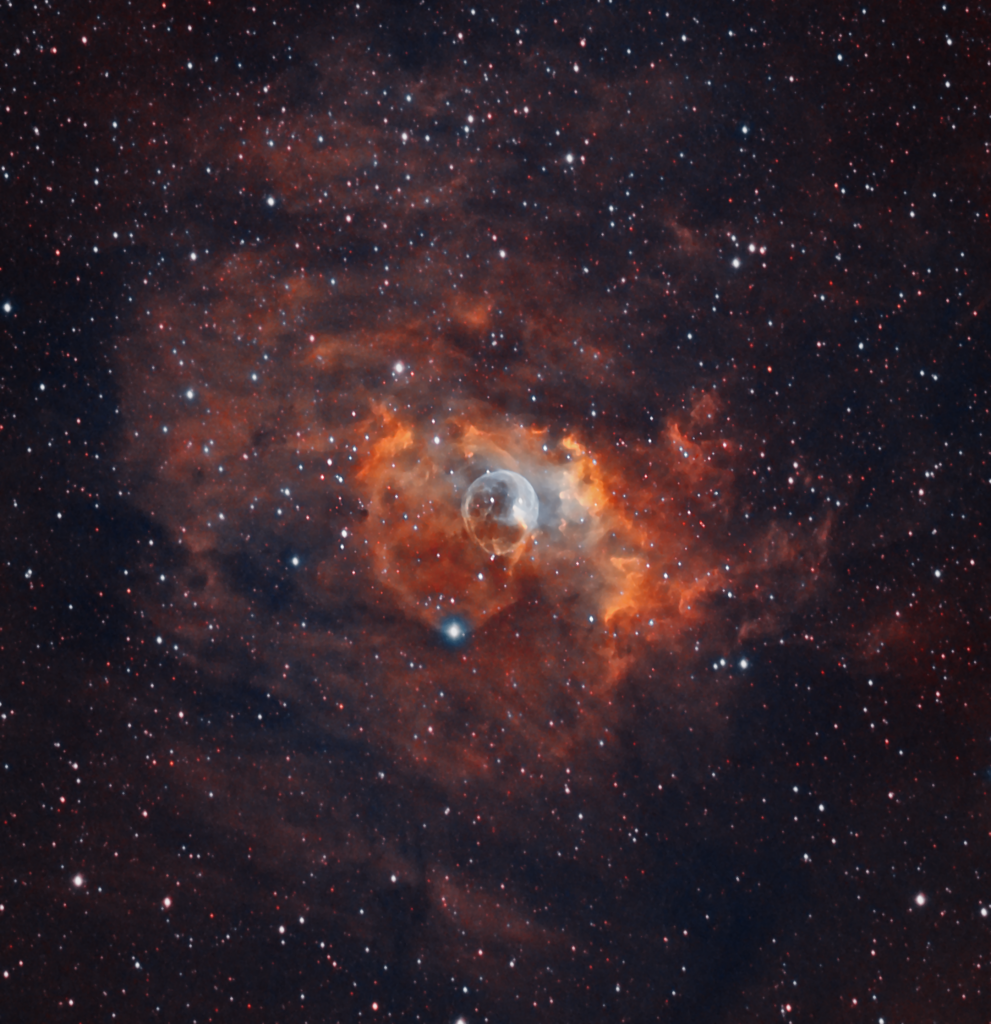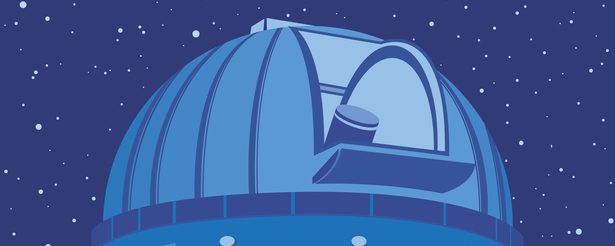The “Bubble Nebula”
Here’s my latest image of the “Bubble Nebula”, one of my favorite objects in our galaxy. That blue “bubble” is a shell of gas pushed out by the stellar wind of the bright star just right of its center. It’s a big star, 10-20 times larger than our sun. Its radiation is also illuminating and shaping the clouds of gas around it.To put its size in perspective, this nebula is 10 light-years across. If the Voyager spacecraft were to travel across it, it would take about 200,000 years to make the journey.
And that pales in comparison to the Bubble Nebula’s distance from us. We only have a rough idea, but it’s in the neighborhood of 10,000 light-years away. It’s hard to wrap your head around distances like that, but for comparison the closest star to the Sun, Proxima Centauri, is only 4 light-years away – and yet it is still impossibly far for us to reach. The Bubble is around 2,500 times farther than that. And yet, in cosmic terms, that’s just around the corner in our own little galactic neighborhood.
You’ll find the Bubble Nebula in the constellation Cassiopeia. This image was taken this week, incorporating 10 hours of exposure time through filters for ionized Hydrogen, Oxygen, and Sulfur emissions. The colors in the image represent the balance between these emissions. If you could see its true color with your eye, it would just appear red. Red is the color of irradiated Hydrogen, and that’s what most of the Universe is made of.
We might get a couple more clear nights next week, and if so I’ll try to get even more detail on it. Tech details: Sky-Watcher 190MN telescope, Atik 383L+ camera, Software Bisque MyT mount, Astronomik 6nm narrowband filters. Processed in PixInsight and Photoshop.








